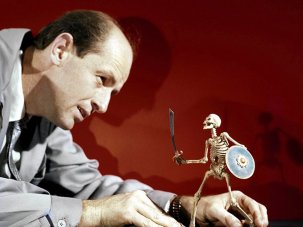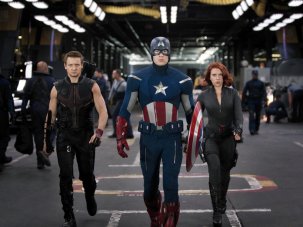Web exclusive
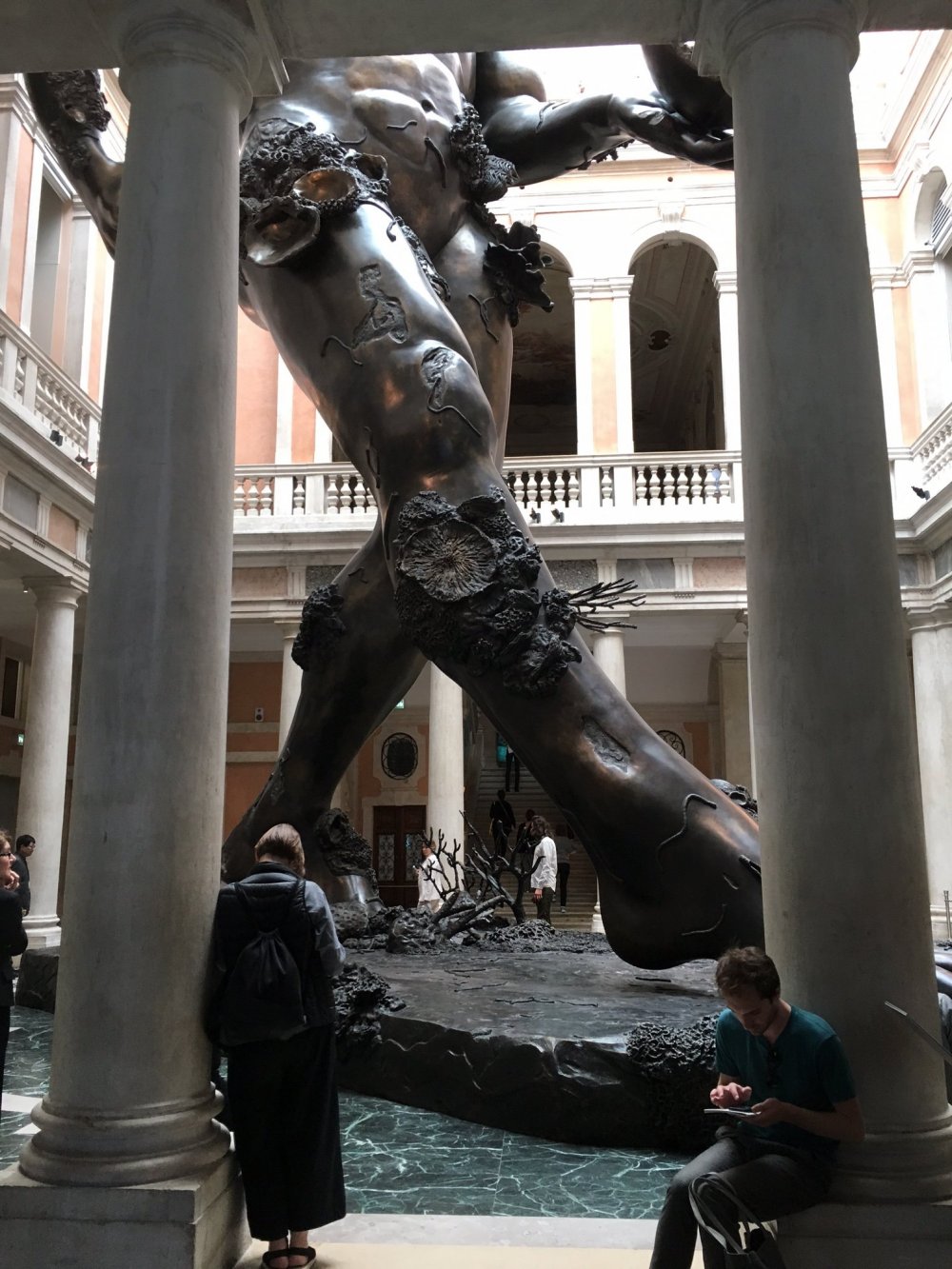
Treasures from the Wreck of the Unbelievable (2017)
When Damien Hirst’s Treasures from the Wreck of the Unbelievable opened this spring in two spectacular Venetian exhibition venues owned by French billionaire François Pinault – Punta della Dogana and Palazzo Grassi – it was met by a huge, if divided, critical response. The Economist suggested it “may be the most ambitious exhibition ever mounted by an artist”.
Damien Hirst’s Treasures from the Wreck of the Unbelievable is at Palazzo Grassi and Punta Della Dogana, Venice, until 3 December 2017.
The accompanying mock-documentary, parts of which can be seen as part of Hirst’s Venice extravaganza at the Palazzo Grassi and Punta Della Dogana, is currently sold by Park Circus.
Coinciding with each Venice Biennale since 2011, the Pinault Foundation has showcased artists from its enormous collection, as well as other works, in highly ambitious, perfectly curated and presented exhibitions. One of the highlights of the 2015 Biennale, for instance, was Slip of the Tongue, featuring and curated by artist Danh Vo with curator Carolina Bourgeois. In departure from this group format, however, it was announced that in 2017 the foundation would present a solo exhibition of new work by Damien Hirst – an extravaganza entitled Treasures from the Wreck of the Unbelievable.
Unbelievable indeed. I was not alone in my astonishment that the curatorial powerhouse responsible for three excellent and highly memorable exhibitions (including one of the most beautiful shows I have ever seen) should now present a super-sized solo show by an artist whose work for many years had not been as well regarded for many years as his powerful and influential early work. Might it even spell the end of Hirst’s career?
When the show opened a month before the Biennale, the scale of this giant and lavish project was revealed. I was amazed to find many serious critics and collectors lining up to endorse and support it. By the time I arrived in Venice for the preview of the Biennale, word on everyone’s lips was that the show was 60-70 percent sold. I’d seen so much in the art press that I didn’t prioritise the exhibition, instead focusing on the Biennale itself, but on my last day, I decided to use my free pass and see what all the excitement was about.
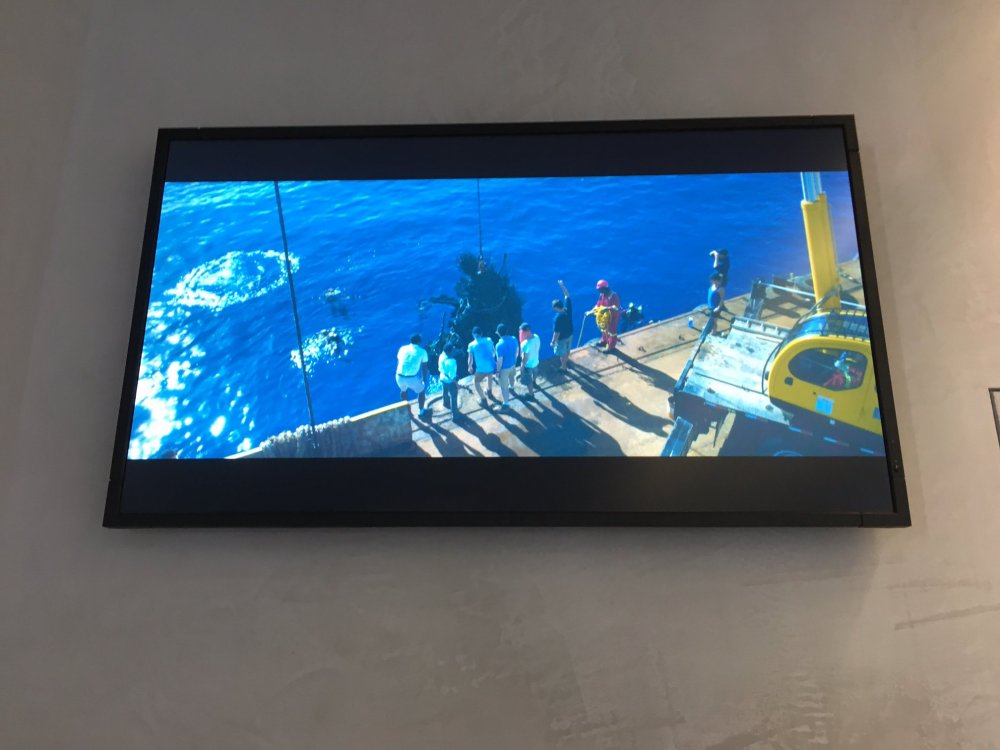
A monitor screening Treasures from the Wreck of the Unbelievable
I was amused to find that in the entrance to the exhibition at Punta della Dogana, the wall text about the show read more like a film pitch than the usual erudite ‘artspeak’. It vividly set the scene of an expedition in 2008 that found the wreck of a ship laden with treasure. It disclosed that the Unbelievable had belonged to a mythical art collector (a freed Roman slave) and its bounty destined for a temple he had built for the purpose. The ship and its cargo were lost and lay undiscovered until 2008. Accompanying the text was an exquisitely shot short film, a ‘teaser’ that appeared to show the ocean salvage mission.
Upon entering the gallery, I felt as if I was walking around a Hollywood film studio lot of a lavish underwater fantasy film from an era before CGI. The enormous sculptures dwarfed their audience; some appeared to be fresh from the ocean bed, riddled with elaborate barnacles and corals, while others appeared restored, gleaming, clean, metal, marble and glass. I soon began to recognise some of the characters, derived from antiquity, but via Ray Harryhausen. Ironically, even though some of the figures appeared to be directly copied, the effect was quite different – Harryhausen conjured up giants, monsters and mythical scenes from table-top stop-frame animated figures while, rather like the unimaginative but highly successful Guardians of the Galaxy franchise, Hirst’s works simply knock the viewer out with scale, muscle, naked women and money.
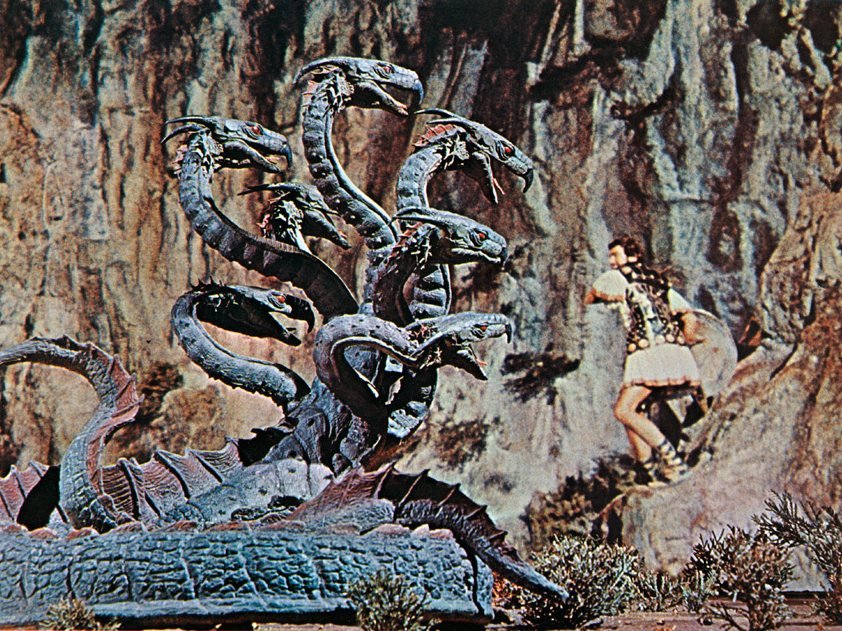
Jason and the Argonauts (1963)
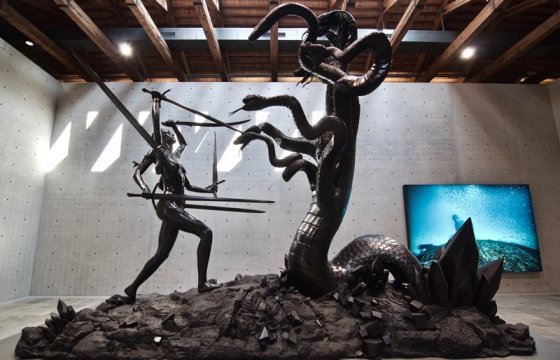
A sculpture from Treasures from the Wreck of the Unbelievable (2017)
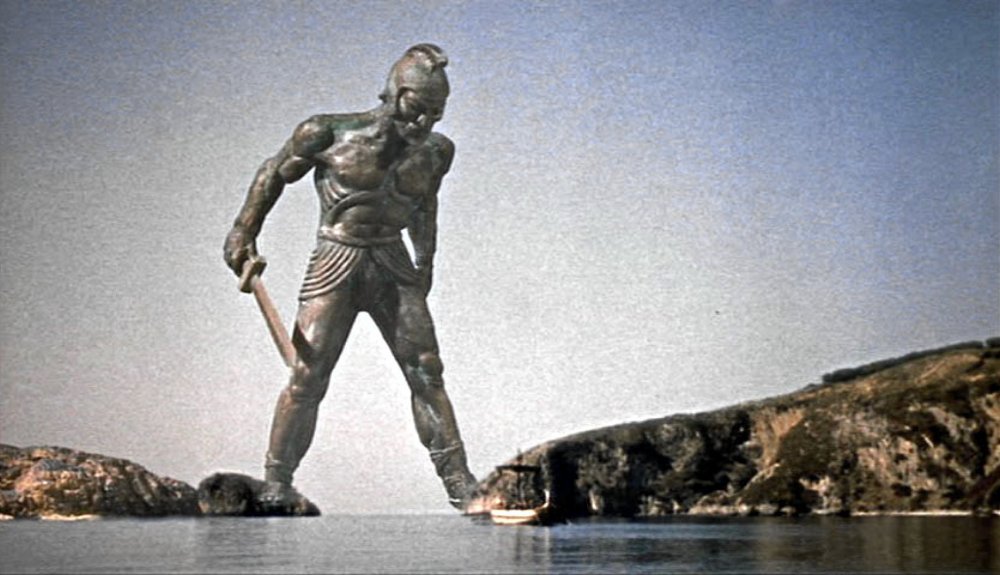
Jason and the Argonauts (1963)
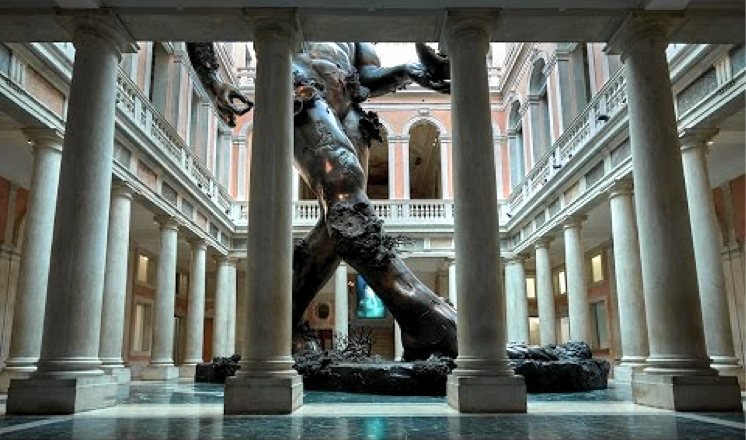
Treasures from the Wreck of the Unbelievable (2017)
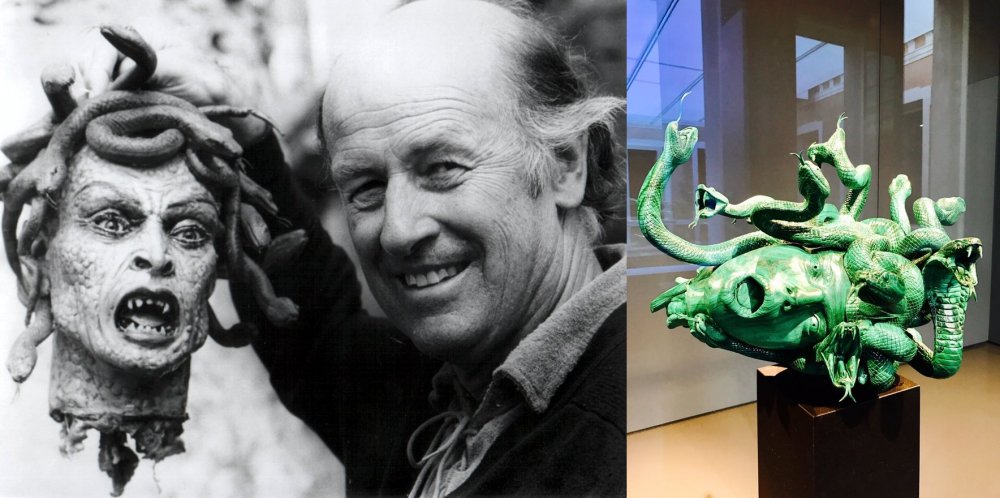
Medusa with Ray Harryhausen; a sculpture from Treasures from the Wreck of the Unbelievable (2017)
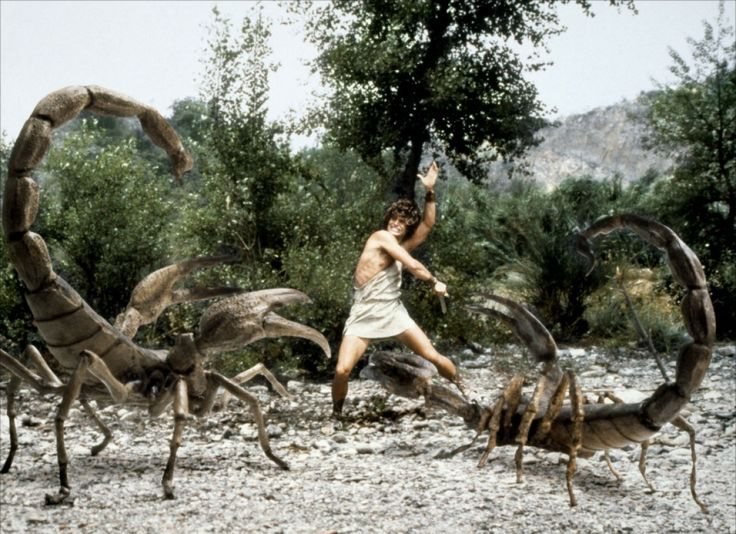
Clash of the Titans (1981)
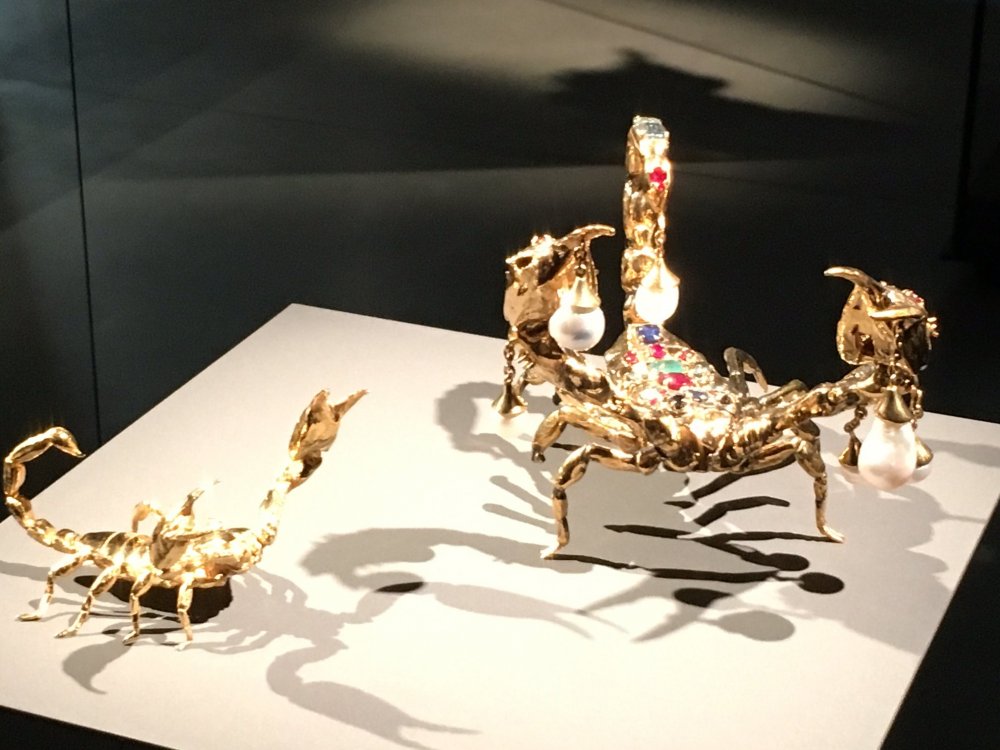
Sculptures from Treasures from the Wreck of the Unbelievable (2017)
Looking around I saw more film images, including The Elephant Man. I couldn’t help thinking that Hirst seems impervious to performance but is captivated by prosthetics, the artifice.
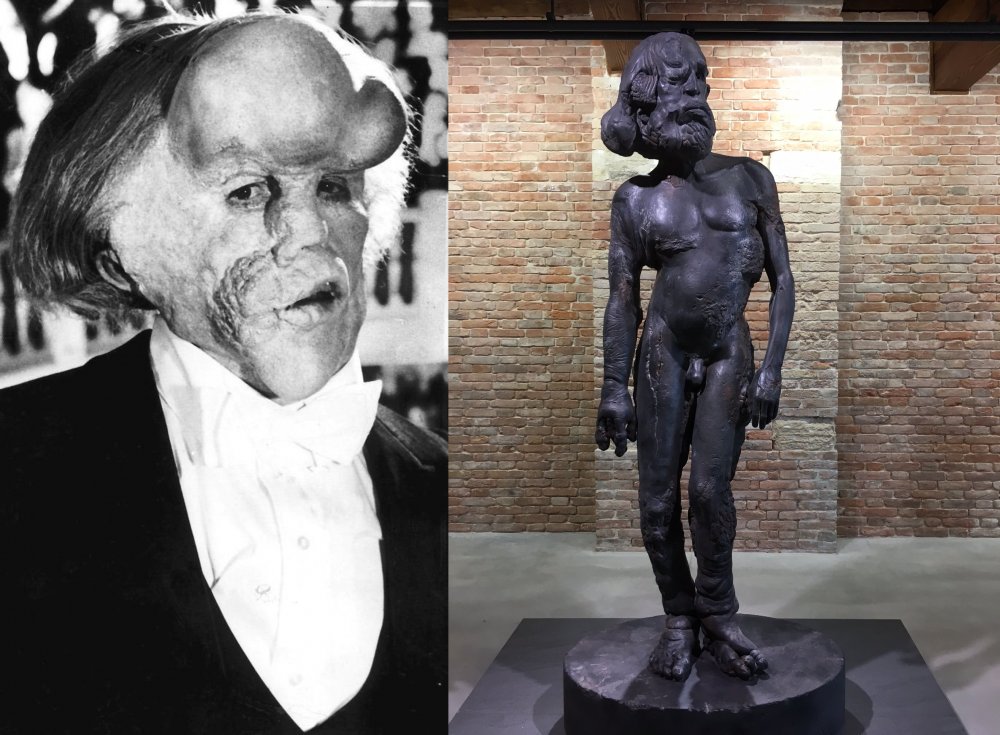
John Hurt as The Elephant Man (1980); a sculpture from Treasures from the Wreck of the Unbelievable (2017)
Elsewhere I was reminded of Transformers, “coral-encrusted” and golden – another super-profitable film franchise and here a theme seems to develop.
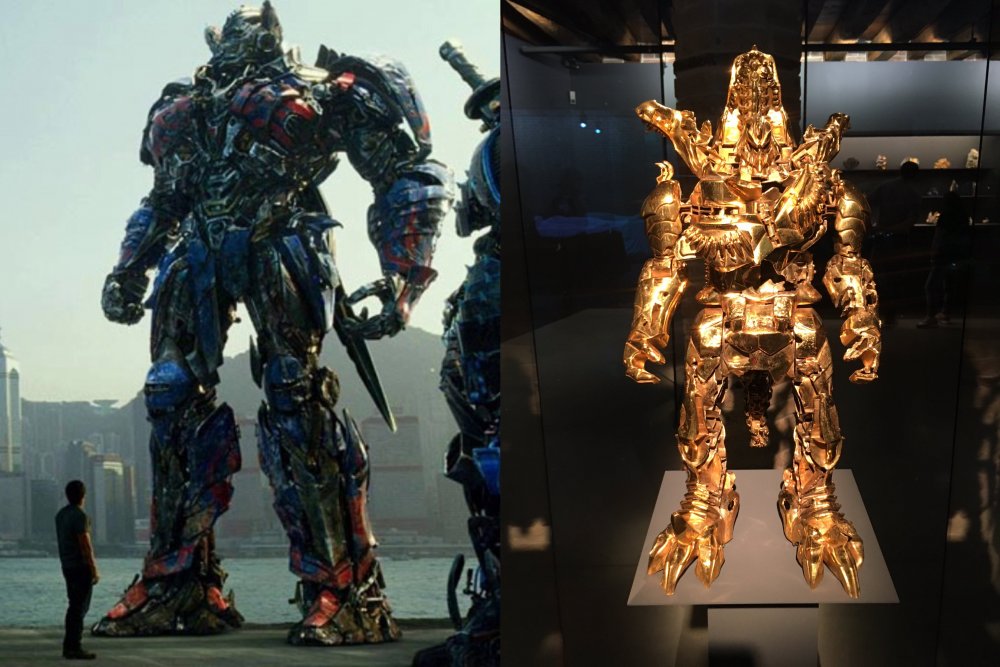
Transformers: The Last Knight (2017); a sculpture from Treasures from the Wreck of the Unbelievable (2017)
A Spielberg/Harryhausen mash-up showed another sexy naked woman about to be devoured by sharks, an image key to the extremely successful Jaws franchise.
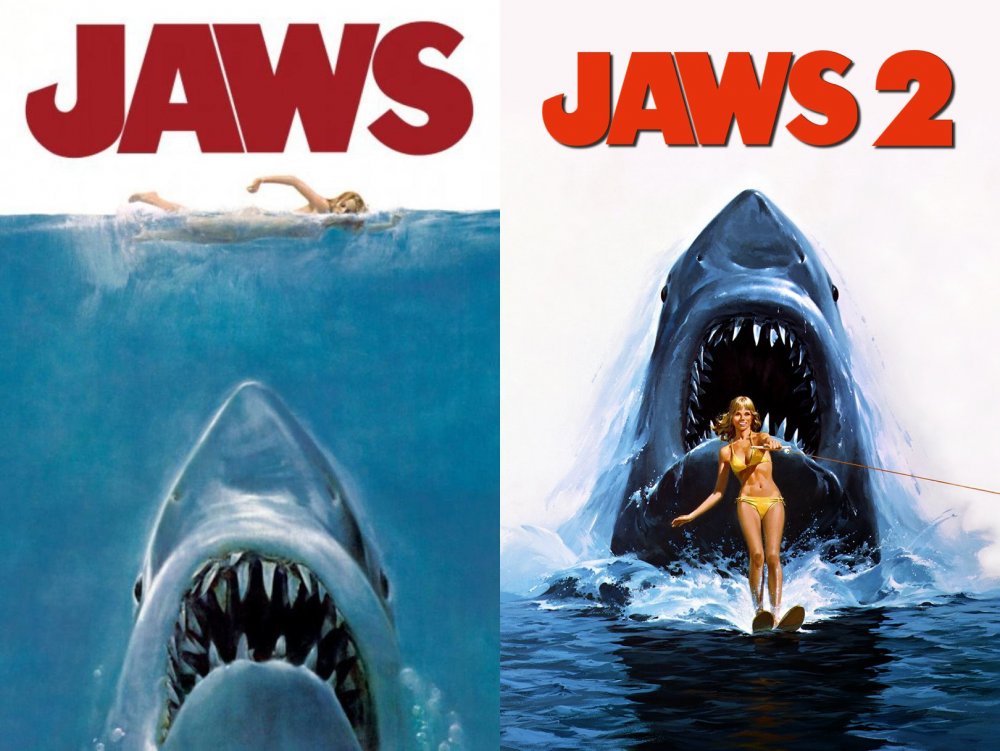
US posters for Jaws (1975) and Jaws 2 (1978)
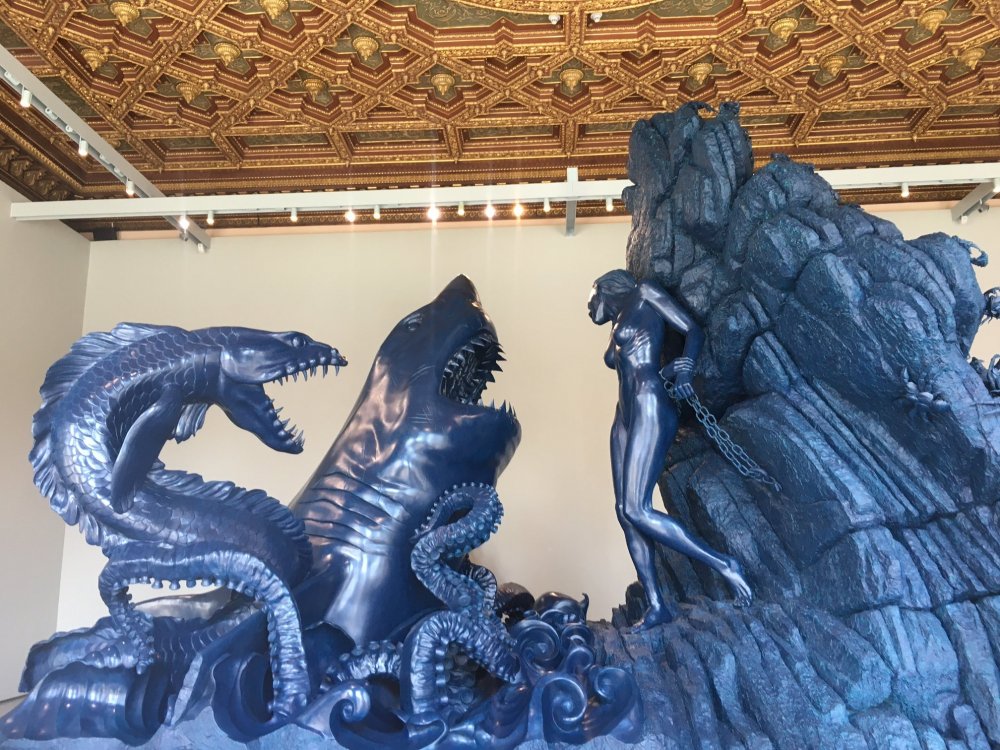
A sculpture from Treasures from the Wreck of the Unbelievable (2017)
There are several characters from Disney in the show, but my own personal payoff came was this image. Who could this man holding hands with Mickey Mouse? Sergei Eisenstein! I had to give Hirst some credit here.
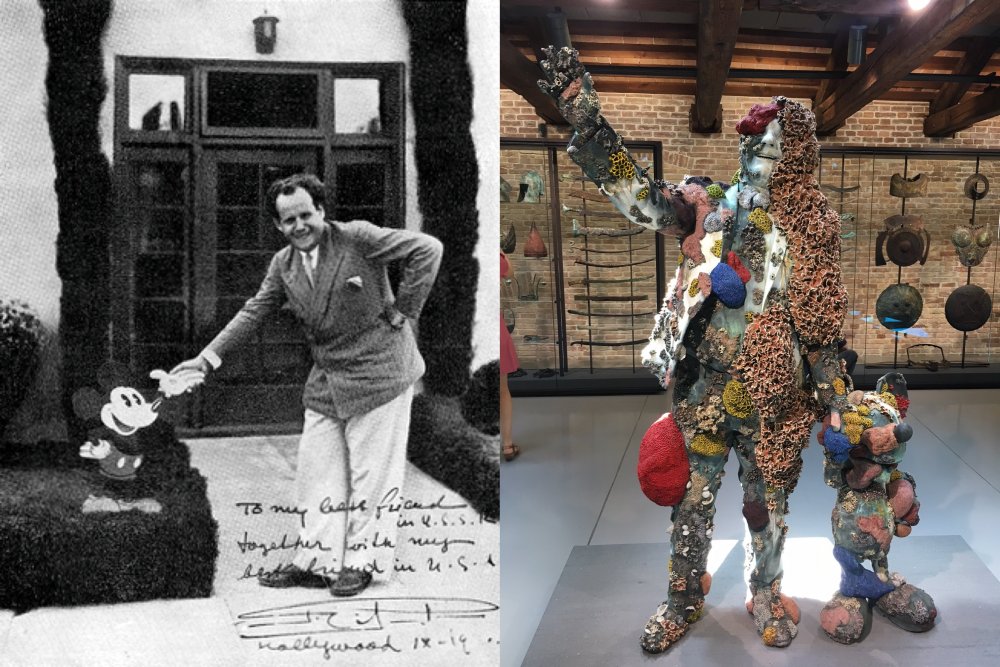
Mickey Mouse with Sergei Eisenstein; a sculpture from Treasures from the Wreck of the Unbelievable (2017)
Hirst even gives himself a starring role, as he places himself within the treasures of the wreck. So, is he actually satirising himself and the mega-collectors? Is he satirising the art market and even the art world? Hirst is estimated to be worth $1 billion, but that is nothing compared with Pinault’s $20.5 billion from the luxury and fashion empire he runs with his son François-Henri Pinault, who is worth $19.5 billion (and happens to be married to Salma Hayek).
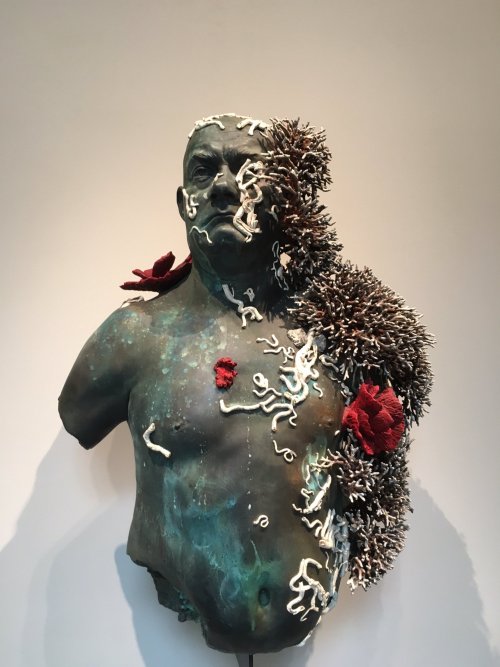
Treasures from the Wreck of the Unbelievable (2017)
No. Satire requires criticism, but this is a folly and an unashamed celebration on an epic scale. It is also an enormous money-making endeavour, where the merchandising is the artwork and there are many more works in this project, not shown in the exhibition, with most prices ranging from $500,000 to $5 million (each piece is available in different sizes and materials). There are several books and there is a feature film, which was announced at Cannes.
As a collector mentioned to me in Harry’s Bar the evening before I saw the show, the difficulty for them is how to buy. “Is it the scale?” I asked, “I suppose few venues can accommodate the work?”
“No,” she replied. “What is important is the we cannot just buy one or two pieces, that wouldn’t make sense for a museum in this case – we need to buy a body of work and the difficulty is in selecting which pieces.”
This is not about art, it’s a show conceived as a blockbuster in a world where more is more.
-
The Digital Edition and Archive quick link
Log in here to your digital edition and archive subscription, take a look at the packages on offer and buy a subscription.





